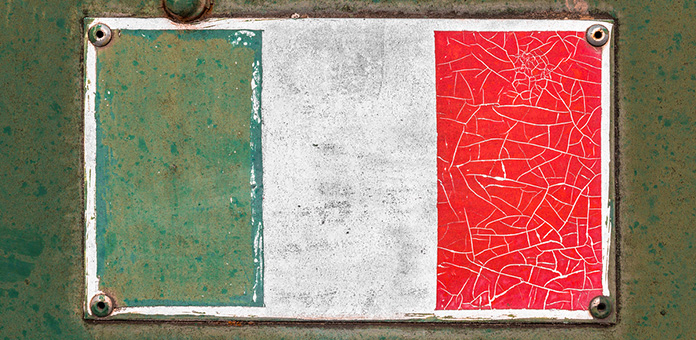
Leading up to and since the 2008–2009 economic meltdown, global financial markets give evidence of falling victim to the “frog in hot water” syndrome. The constant drip-drip of depressing economic news and declining indicators seem to be expected and accepted as “normal.”
However, the Brexit shock has created an awareness that the economic pot is not only hot, it is boiling over. The effects of the vote to leave the EU are still being sorted out, but are readily being blamed for a number of other market ripple effects. From significantly increased prices of gold and silver to concerns over currency wars to record low U.S. Treasury rates, analysts are scrambling to evaluate the market’s direction.
The Real Italian Job?
Now, the problems at Italian banks are just the latest aftershock to raise its head in the international markets. Until recently just one on a long list of economic concerns in EU countries, the numbers now being reported are raising the alarm level to a piercing scream.
Just a cursory look at the dire state of these Italian financial institutions is enough to cause alarm, even if the markets weren’t in such post-Brexit turmoil. While the volatility has exacerbated the situation, the roots of pending disaster have been entrenched over the past decade and more.
Analysts are pointing to a combination of factors that are bringing the concerns over Italy’s possible banking collapse to the forefront. These include: 1
- It is estimated that as much as a stunning 17 percent of all loans held by Italian banks are bad. While the percentage is enough to cause a gasp among any knowledgeable market watchers, the amount of it represents—over £360bn ($400bn)—is far greater than that seen during the worst months of the 2008 collapse. Moreover, the banks have made provisions for less than half of that amount in bad debt reserves.
- No help or hope for a solution will come from the Italian economy, limping along on zero or near-zero rates of growth.
- Low interests rates—and indications they are going lower—add to the inability of the banks to generate any income or profits.
- An atmosphere of political backscratching and corrupt lending that helped create the problem will also impede or block any effective efforts to resolve the nearly insurmountable issues facing the banks.
Another Seminal Vote and No Likely Rescue
Unfortunately, near escapes such as the Grexit scare encouraged the frog syndrome, leaving many central banks to feel they could continue unaccountable and irresponsible spending and debt policies indefinitely. That attitude allowed the PIIGS (Portugal, Italy, Ireland, Greece and Spain) to default, reluctantly rescued at the last moment by massive new loans from the EU.
While Ireland and Spain have used this bailout to show positive signs, the other three PIIGS remain in a very unstable situation. Of these, the size of the Italy crisis makes it large enough to threaten the stability of entire EU. And, this time, there is a growing determination, led by Germany, to not offer a rescue or bailout in any form.
Another Vote to Leave the EU
Italy is now facing a major vote in October that will allow Prime Minister Matteo Renzi to implement policies and take steps to begin to change his country’s economic challenges. If that vote goes the wrong way, observers fear the government will collapse and there is no positive scenario for what would emerge from the chaos. 2
Those long-term traders and investors in gold in recent years see these current problems as validation that those policies are, in fact, unsustainable. As one tremor after another further fractures the fragile fiat currency economies of the world, gold and silver shine as the preeminent safe haven asset.
Additional Sources
2 – http://www.businessinsider.com/italys-political-and-economic-crisis-threatens-europes-stability-2016-7

